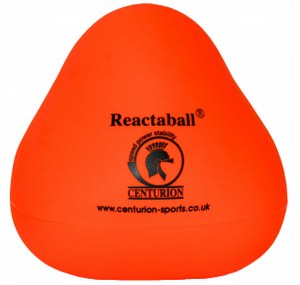Check out this awesome guest blog post by Australian Strength Coach sensation, John Wayne Legg!
Nobody would argue that to reach your true potential in a martial art or combat sport, you need to be accurate when executing a move. Whether you are attempting an arm-bar, single leg take-down or a punch to the face, you are going to suck if you don’t connect with your target where you want to. And while much practice in your chosen sport will go a long way to building this skill, there are extra things we can do to either catch up or put the icing on the cake, so to speak.
Growing up I had one of the worst hand-eye coordination of people I knew. In fact it was so bad that I would usually get picked last for sports teams during P.E. class at school. I can also remember getting called “butter-fingers” quite a lot. Why was it so bad? Probably because neither of my parents followed sports at all, and thus had no interest in playing catch with me or kicking the ball around. When I took up karate at the age of 13, this helped a lot to improve my deficiency in this area, but compared to other kids I still sucked. As a side point, If you have kids or plan to, it is imperative that you take advantage of the early learning phases (particularly from birth until 7 years of age) to develop not only hand-eye coordination, but agility, strength and speed.
Maybe you can identify with the story of my early years at school or perhaps your talent for catching a ball or hitting your target is friggin awesome. Either way, the 5 drills below can help you to dramatically improve your hand-eye coordination skill, and make you a better athlete. These are drills that I have personally used and found great success with. And even though I do not actively compete in a combat sport these days I still like doing these drills, as they are lots of bloody fun and keep me sharp. The best thing is that you do not need a partner to practice these, so if required you can do them at home by yourself.
Juggling
What you need: 2 to 3 balls you can hold comfortably in one hand (don’t get sucked into thinking you need ‘special’ juggling balls).
This is a skill that will teach you many things that carry over to other activities. When I first started I was crap as you could imagine, not having good natural hand-eye coordination. I originally taught myself to juggle from a book. This video below, although a little corny, should help you get started. If it does for you what it did for me, you should notice big improvements in your ability to maintain eye gaze and focus for other things.
Wall Drills
A brick or cement wall is best, as you don’t want to go and put dints or holes in the wall of your/your parent’s house. You can use any size ball you like to begin this drill. Don’t start too small, as it will only increase your learning curve. It is best to start with a ball you find very easy to catch, then go smaller as your skill develops.
Start by throwing the ball against the wall with one hand, then catching it with the other as it rebounds. Keep repeating and alternating the starting hand, as you move closer and further away from the wall. When this feels easy you can start throwing the ball with one and and catch it with the same hand. When you feel you are getting comfortable with this, try trowing the ball harder. See how hard you can throw it and still catch it consistently. Try an up high hand postion, as if you were throwing overhand. As well as throwing it underhand, but keep your arms down low to catch the ball. This can start to get quite challenging. You can also have great fun doing this with a partner. They throw the ball on the wall and you catch it (one handed). Sort of like hand-ball, but you do not let the ball bounce.
Throw and Catch
What you need: Rolled up sock / tennis ball / small dumbbell (you know, the pink barbie ones) or even a small sandbag (5kg). It is best to start with a soft object like a sock and progress to a weighted object as you become more proficient.
This is particularly a good drill for any combat athlete that punches or needs to grab an arm quickly. Adopt the normal guard position that you stand in when fighting/wrestling etc. You will toss your object out in front of you, then from your guard position quickly reach out and grab it with the other hand. Keep alternating sides. When this feels easy, try tossing it out and grabbing it with the same hand. But make sure you don’t cheat. In other words, don’t let your hand follow after the object. This drill will not only improve your hand-eye coordination, it will also teach you that right combination of looseness and tightness that is so necessary for any combat sport.
Through the Ring
What you need: Small tyre / steel ring / cardboard cutout ring. You can start reasonably big (size of your own waist), and decrease the size as you improve.
Hang your ring or have a partner hold it positioned roughly 6 to 10 inches away from a target (punching bag or focus mitt). From here it is quite simple (but not easy). Throw punches as you normally would but punch through the ring. You will find that your accuracy and ability to take advantage of openings will improve dramatically.
Bounce and catch/chase
What you need: A reactor ball (refer to picture)
In concept this is a very simple drill. In practice however, it can be one of the hardest and most frustrating. The reactor ball is the key to this drill and the harder the surface (concrete) the more difficult is becomes. Just toss the ball out in front of you, then chase it down and try and catch it before it hit the ground again. If you have a friend or coach they can bounce the ball for you. You can even do this with 2 or more people, and compete for who can get the most catches.
There you have it, 5 ways that you can improve your hand-eye coordination. There are definitely other drills you can also do, but I can personally testify to these ones making a difference. Try them and let me know how you go.
About the Author
 John Wayne Legg is the founder and head Strength and Conditioning coach at Outlaw Strength Gym in Melbourne, Australia. He has an extensive background in martial arts and combat sports, including point fighting karate, kickboxing and full-contact karate (kyokushin). John is also the author of the book, How To Be A Strength Outlaw. A truly inspirational and revolutionary book on how training your body for strength can develop your strength of character. Using snap shots from the life of Ned Kelly, Australia’s most notorious outlaw and stories from his own life, John shows how you too can break free from the mould of conformity and truly be you.
John Wayne Legg is the founder and head Strength and Conditioning coach at Outlaw Strength Gym in Melbourne, Australia. He has an extensive background in martial arts and combat sports, including point fighting karate, kickboxing and full-contact karate (kyokushin). John is also the author of the book, How To Be A Strength Outlaw. A truly inspirational and revolutionary book on how training your body for strength can develop your strength of character. Using snap shots from the life of Ned Kelly, Australia’s most notorious outlaw and stories from his own life, John shows how you too can break free from the mould of conformity and truly be you.






1 Comment
[…] with it you should notice real gains in your ability to focus and follow objects. You can also try wall drills. Start with a ball you find easy to catch, and stand close to a wall and bounce the ball. Catch it […]
Leave A Response